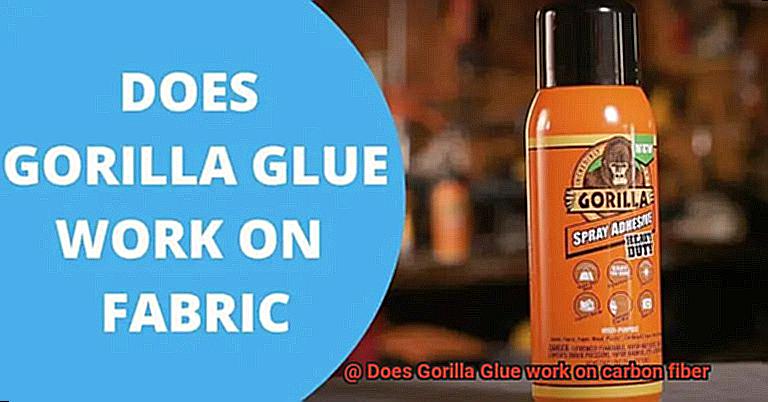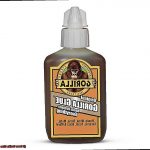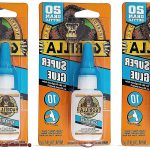Welcome to our blog post where we’re going to get down and dirty with the burning question: Does Gorilla Glue work on carbon fiber?
Carbon fiber, that sleek and sexy material known for its crazy strength-to-weight ratio, has taken the world by storm. From badass cars to high-flying airplanes, carbon fiber is everywhere.
But when it comes to bonding or fixing those carbon fiber bits and bobs, you gotta choose your adhesive wisely. Enter Gorilla Glue – the stuff that promises Herculean strength and endless possibilities.
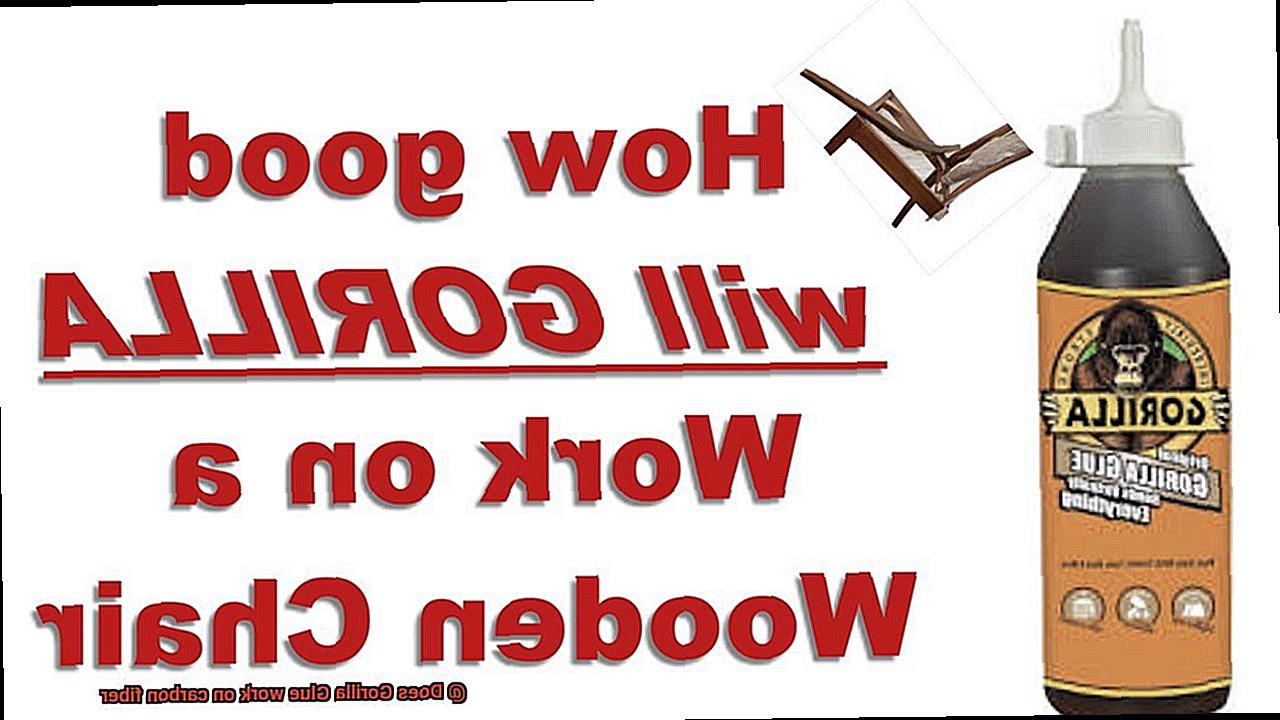
So buckle up and let’s find out if Gorilla Glue can handle the wild ride of sticking it out with carbon fiber.
What is Gorilla Glue?
Contents
- 1 What is Gorilla Glue?
- 2 What is Carbon Fiber?
- 3 Properties of Gorilla Glue and Carbon Fiber
- 4 Challenges in Bonding Carbon Fiber with Adhesives
- 5 Does Gorilla Glue Work on Carbon Fiber?
- 6 Factors to Consider for Bonding Carbon Fiber with Gorilla Glue
- 7 Specialized Adhesives for Bonding Carbon Fiber
- 8 Testing the Strength of the Bond Between Gorilla Glue and Carbon Fiber
- 9 Conclusion
Gorilla Glue is a widely recognized brand of adhesive that has gained popularity for its strong bonding capabilities. It is a type of polyurethane glue that is known for its versatility and ability to bond various materials together. Whether you need to repair broken objects, create new projects, or bond different materials together, Gorilla Glue offers a reliable solution.
One of the key features of Gorilla Glue is its exceptional bond strength. It is designed to create a strong permanent bond between different surfaces, making it ideal for a wide range of applications. It can effectively bond materials such as wood, metal, stone, ceramic, fabric, and more.
Gorilla Glue comes in different forms to cater to different bonding needs. The original Gorilla Glue is ideal for bonding surfaces with varying textures and porous materials like wood and fabric. Gorilla Super Glue offers instant bonding for smaller projects. Gorilla Wood Glue is specifically formulated for woodworking projects, providing a strong bond on wood surfaces. And Gorilla Epoxy is perfect for bonding materials that require high strength and durability.
When applying Gorilla Glue, it is important to ensure that the surfaces are clean and dry. Lightly dampening one surface with water before applying the glue to the other surface helps activate the adhesive properties. Once applied, Gorilla Glue expands as it cures and dries. It expands up to three times its original size, so it should be used sparingly to avoid excessive foaming and overflow.
While Gorilla Glue is known for its effectiveness in bonding various materials, its compatibility with carbon fiber may vary. Carbon fiber has a smooth surface and low porosity, making it challenging to bond with certain adhesives. Some users have reported success with Gorilla Glue on carbon fiber, while others have found that it does not provide a strong enough bond.
To increase the chances of achieving a strong bond between Gorilla Glue and carbon fiber, consider the following factors:
- Surface Preparation: Roughen the surface of the carbon fiber using sandpaper or an abrasive material. This helps create more surface area for the adhesive to grip onto.
- Application Technique: Apply Gorilla Glue to both surfaces, ensuring even coverage. Following the instructions provided by the manufacturer is crucial for optimal results.
- Curing Conditions: Allow the adhesive to cure under pressure, such as clamping the bonded pieces together. This helps promote a stronger bond.
If a strong and reliable bond is crucial, it may be advisable to consider using an adhesive specifically formulated for carbon fiber. These adhesives are designed to provide optimal adhesion to carbon fiber surfaces and may offer better results than general-purpose adhesives like Gorilla Glue.
What is Carbon Fiber?
Carbon fiber is a remarkable material that finds applications in various industries due to its exceptional strength, lightness, and durability. Composed of tightly woven strands of carbon atoms, carbon fiber offers a unique combination of properties that make it highly sought after.
The production of carbon fiber involves a multi-step process. It begins with a precursor material, typically a polymer like polyacrylonitrile (PAN) or rayon. This precursor material undergoes carbonization, where it is heated to high temperatures in the absence of oxygen. This process removes impurities and increases the carbon content, transforming the material into a carbon-rich fiber.
Once the fibers are formed, they are treated with a binding agent or resin, such as epoxy or polyester. The resin fills the gaps between the carbon fibers, acting as a glue to hold them together. This step enhances the strength and durability of the carbon fiber.
One of the most notable characteristics of carbon fiber is its incredible strength. It is about five times stronger than steel while weighing only about one-third of steel’s weight. This combination of strength and lightness makes carbon fiber an ideal choice for applications where weight reduction is crucial, such as in aerospace components and high-performance sporting goods.
In addition to its mechanical properties, carbon fiber also exhibits excellent resistance to heat, chemicals, and corrosion. It can withstand high temperatures without degradation and is resistant to the effects of chemicals and corrosive substances. Carbon fiber also has outstanding fatigue resistance, meaning it can endure repeated stress and loading cycles without weakening. These qualities make it highly desirable for applications in demanding environments.
Another advantage of carbon fiber is its excellent electrical conductivity. This property makes it suitable for use in electrical and electronic devices where electromagnetic interference needs to be minimized.
Carbon fiber can be manufactured in various forms, including sheets, tubes, and fabrics. This versatility allows designers and engineers to create structures tailored to specific requirements. It can also be used in combination with other materials, such as fiberglass or Kevlar, to further enhance its properties and create composite structures.
Properties of Gorilla Glue and Carbon Fiber
Get ready to embark on an exciting journey into the world of bonding carbon fiber with the mighty Gorilla Glue. Strap on your safety goggles and prepare for an adventure as we explore the properties and considerations for achieving a superhero bond between these two extraordinary materials.
Consideration #1: Porous vs. Non-Porous:
Let’s start with the basics, folks. Gorilla Glue has a special affinity for porous surfaces, but here’s where things get interesting – carbon fiber is a non-porous material. This means that carbon fiber may not offer the ideal surface for our glue to penetrate and create a strong bond. But don’t despair. We have some tricks up our sleeve.
Consideration #2: Adhesive Compatibility:
While Gorilla Glue is compatible with a wide range of materials, it may not be specifically formulated for bonding carbon fiber. To ensure optimal results, it’s best to use adhesives that are specifically designed for bonding carbon fiber. Remember, we want a match made in adhesive heaven.
Consideration #3: Surface Preparation:
The unsung hero of successful bonding – surface preparation. Before attempting to bond carbon fiber and Gorilla Glue, it is crucial to clean the carbon fiber surface thoroughly. Remove any contaminants or residues that could hinder the bonding process. To enhance adhesive performance, consider gently roughening the surface to improve its ability to adhere to the super-strong carbon fiber.
Consideration #4: Intended Use and Load Requirements:

Here’s the big one, folks – your intended use and load requirements. While Gorilla Glue provides a strong bond, it may not be suitable for applications that require exceptional strength or heavy loads. There are alternative bonding methods available that might better suit your needs. Consult with experts and explore other options if necessary.
In conclusion, bonding carbon fiber with Gorilla Glue is like a superhero team-up – it comes with its challenges, but with the right approach, incredible results can be achieved. Remember to consider the non-porous nature of carbon fiber, adhesive compatibility, proper surface preparation, and your intended use and load requirements. Always follow the manufacturer’s instructions and consult experts in the field for specific applications involving carbon fiber bonding. Armed with these tips, you’ll be well-equipped to unleash the superpowers of adhesive.
Challenges in Bonding Carbon Fiber with Adhesives
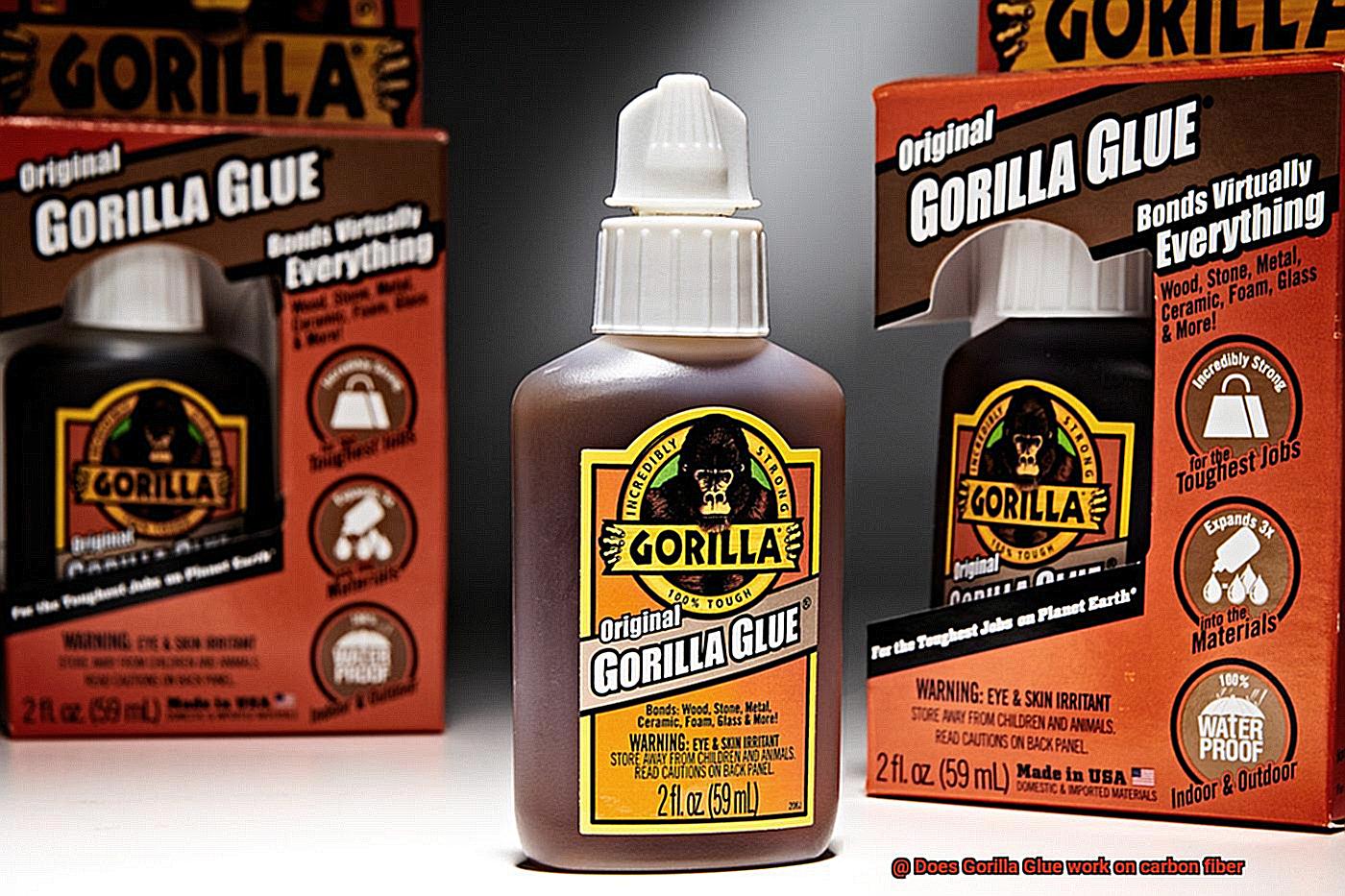
Bonding carbon fiber with adhesives is an intriguing journey filled with challenges and obstacles. This lightweight and incredibly strong material has become a staple in industries like aerospace, automotive, and sports equipment. However, achieving a superhero-like bond between carbon fiber and adhesives is no easy feat.
The first hurdle to overcome is surface preparation. Carbon fiber boasts a smooth and non-porous surface, which poses a significant challenge for adhesives to properly adhere to. To tackle this issue, the surface of carbon fiber must be treated or modified to enhance its adhesion properties.
Compatibility is another significant challenge when it comes to bonding carbon fiber. This material is highly chemically resistant, meaning not all adhesives can form strong bonds with it. It is crucial to select an adhesive specifically formulated for bonding carbon fiber to ensure a robust and durable bond.
Thermal expansion mismatch is yet another obstacle in this endeavor. Carbon fiber has a low coefficient of thermal expansion, while many adhesives have a higher coefficient. This discrepancy can result in stress build-up and potential bond failure under extreme temperature conditions. Managing this mismatch is vital for long-term bond stability.
Flexibility poses yet another challenge in bonding carbon fiber. In applications where carbon fiber is subjected to dynamic loads, it can experience flexing or bending. Adhesives must possess excellent flexibility and resistance to fatigue to withstand these conditions and maintain a strong bond over time.
Lastly, surface contamination can hinder the bonding process. The presence of contaminants like oils, waxes, or release agents on the surface of carbon fiber interferes with the adhesive’s ability to form a proper bond. Thorough cleaning and meticulous surface preparation are essential for a successful bond.
Does Gorilla Glue Work on Carbon Fiber?
Embark on a thrilling expedition into the world of carbon fiber and adhesives as we unravel the mysteries behind achieving the perfect bond. Prepare to be amazed by the incredible power of this lightweight and robust material as we delve into its bonding potential.
The Smooth Surface Conundrum:

Bonding carbon fiber poses a challenge due to its sleek and non-porous surface, similar to sticking two pieces of glass together. However, fear not. By roughening the surface with sandpaper or employing a chemical etching agent, we can increase the surface area, providing a better grip for our adhesive.
Choosing the Right Adhesive:
Not all adhesives are created equal, especially when it comes to bonding carbon fiber. Our superhero material’s chemical resistance demands an adhesive specially formulated for the task. Epoxy adhesives, known for their high strength and compatibility with smooth surfaces like carbon fiber, become crucial in our quest for the perfect bond.
Thermal Expansion Mismatch:
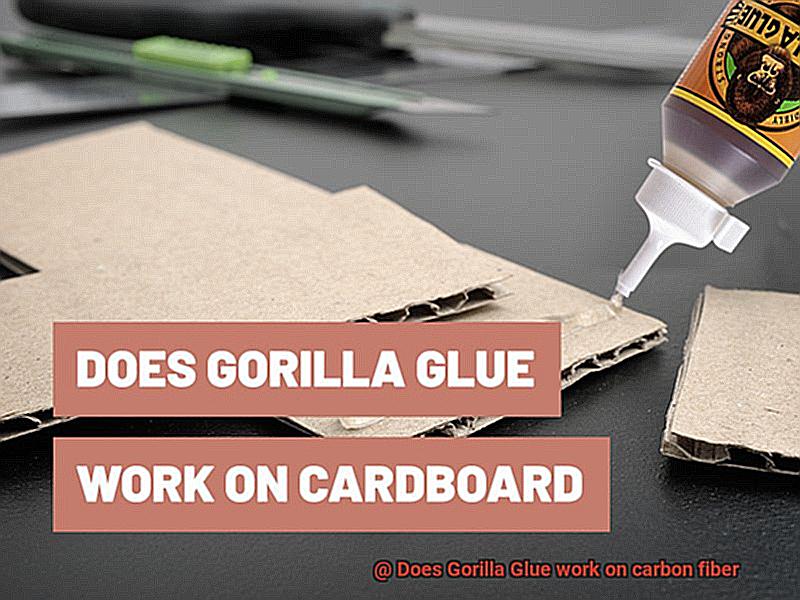
Just when you thought it couldn’t get tougher, enter thermal expansion mismatch. Carbon fiber’s low coefficient clashes with many adhesives’ higher coefficients, potentially causing bond failure under extreme temperature conditions. But fear not. With careful management of this mismatch, stability can be ensured in our long-term bond.
Flexibility is Key:
Dynamic loads pose a significant challenge to any bond, including carbon fiber. For applications involving flexing or bending, our adhesive must possess exceptional flexibility and fatigue resistance. Only then can we withstand these demanding conditions while maintaining a bond as strong as steel.
Defeating Surface Contamination:
Surface contamination plays the role of a sneaky villain in our bonding saga. Oils, waxes, or release agents on carbon fiber’s surface wreak havoc on our bond. To overcome this challenge, thorough cleaning and meticulous surface preparation become our secret weapons for success.
Factors to Consider for Bonding Carbon Fiber with Gorilla Glue
In this blog post, we will explore the key factors to consider when using Gorilla Glue to bond carbon fiber. From surface preparation to curing time, we will provide you with expert insights and practical tips to achieve a strong and durable bond. So, fasten your seatbelts and get ready for an exciting journey.
Surface Preparation:
The first step in bonding carbon fiber with Gorilla Glue is proper surface preparation. To ensure a successful bond, it is crucial to clean the carbon fiber thoroughly. Dirt, grease, or contaminants can interfere with the bonding process and weaken the adhesive strength. A light sanding of the surface will create a rough texture, enhancing the adhesive’s grip for a stronger bond.
Compatibility:
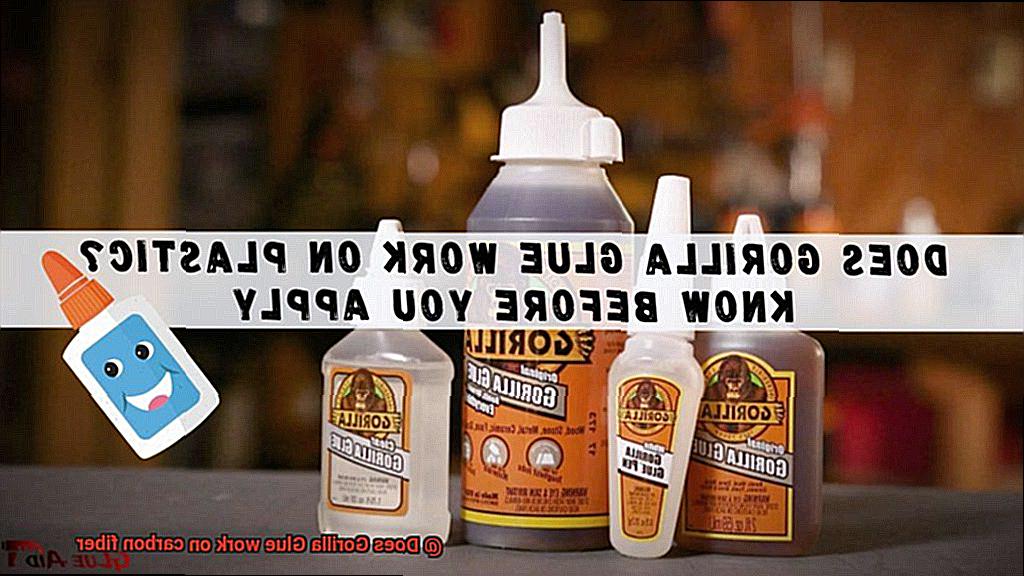
Gorilla Glue is known for its versatility and ability to bond various materials, including carbon fiber. However, it’s always a good idea to conduct a small test on a sample piece of carbon fiber before proceeding with the actual bonding process. This test will help identify any compatibility issues and allow for adjustments or alternative adhesive options if needed.
Temperature and Humidity:
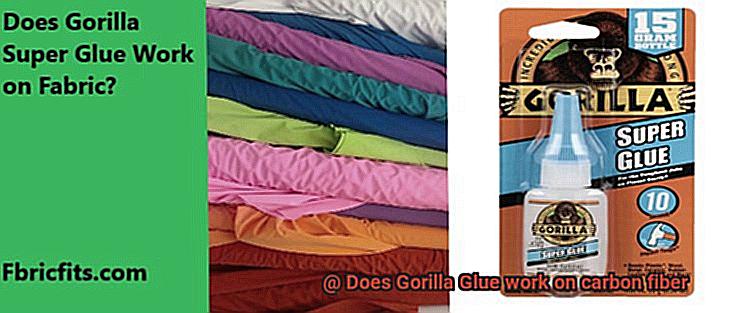
Both temperature and humidity play a crucial role in the bonding process. Gorilla Glue performs best at room temperature (around 70°F or 21°C) and in moderate humidity conditions. Extreme temperatures or high humidity levels can affect the curing time and overall strength of the bond. It is essential to follow the manufacturer’s guidelines regarding temperature and humidity requirements for optimal results.
Clamping Pressure:
Applying the right amount of clamping pressure is essential for a strong bond. Carbon fiber is lightweight, so excessive pressure can cause damage or deformation. On the other hand, insufficient pressure may result in weak adhesion. Use adjustable clamps or weights to evenly distribute pressure across the bonded area. Avoid overtightening the clamps, as it can squeeze out excess adhesive and weaken the bond.
Curing Time:
Gorilla Glue requires sufficient curing time to reach its maximum strength. The curing time varies based on factors such as temperature, humidity, and adhesive layer thickness. It’s important to allow the bonded carbon fiber to cure undisturbed for the recommended duration mentioned on the product label. Premature handling or stress on the bond before complete curing can compromise its strength.
Post-Bonding Considerations:
Once the bonding process is complete, there are a few post-bonding considerations to ensure the longevity of the bond. Avoid exposing the bonded carbon fiber to extreme temperatures or harsh chemicals that may degrade the adhesive. Regular inspection and maintenance are recommended to detect any signs of weakening or failure in the bond. Prompt repair or reinforcement should be undertaken in case of any damage or delamination to prevent further issues.
Specialized Adhesives for Bonding Carbon Fiber
Specialized adhesives play a crucial role in bonding carbon fiber, a remarkable material that is known for its lightweight and exceptional strength. Carbon fiber finds applications in various industries, such as aerospace, automotive, and sporting goods. However, due to its low surface energy, traditional adhesives struggle to adhere effectively to its surface. This is where specialized adhesives come into the picture.
Epoxy adhesives are a popular choice when it comes to bonding carbon fiber. These adhesives consist of two components – resin and hardener – that need to be mixed together before application. Epoxy adhesives offer a super strong bond that can withstand harsh conditions like high temperatures and exposure to chemicals.
For a quick and reliable bonding solution, cyanoacrylate or super glue is another option. Super glue is well-known for its fast curing time and strong bond. However, it is important to choose a super glue specifically formulated for bonding carbon fiber to ensure compatibility and optimal performance.
For those seeking even more specialized options, certain manufacturers offer adhesives explicitly designed for bonding carbon fiber composites. These adhesives are formulated to provide excellent adhesion not only to carbon fiber but also to other composite materials.
It is worth noting that while Gorilla Glue is a popular adhesive brand, it may not be the best choice for bonding carbon fiber. Gorilla Glue is polyurethane-based and may not adhere well to the low surface energy of carbon fiber. It is advisable to opt for adhesives specifically created for carbon fiber bonding.
Before embarking on the gluing process, proper surface preparation is key. The carbon fiber surface should be clean, dry, and free from any contaminants like oils or dust. Some adhesive manufacturers even provide guidelines for surface preparation, which should be followed meticulously for the best results.
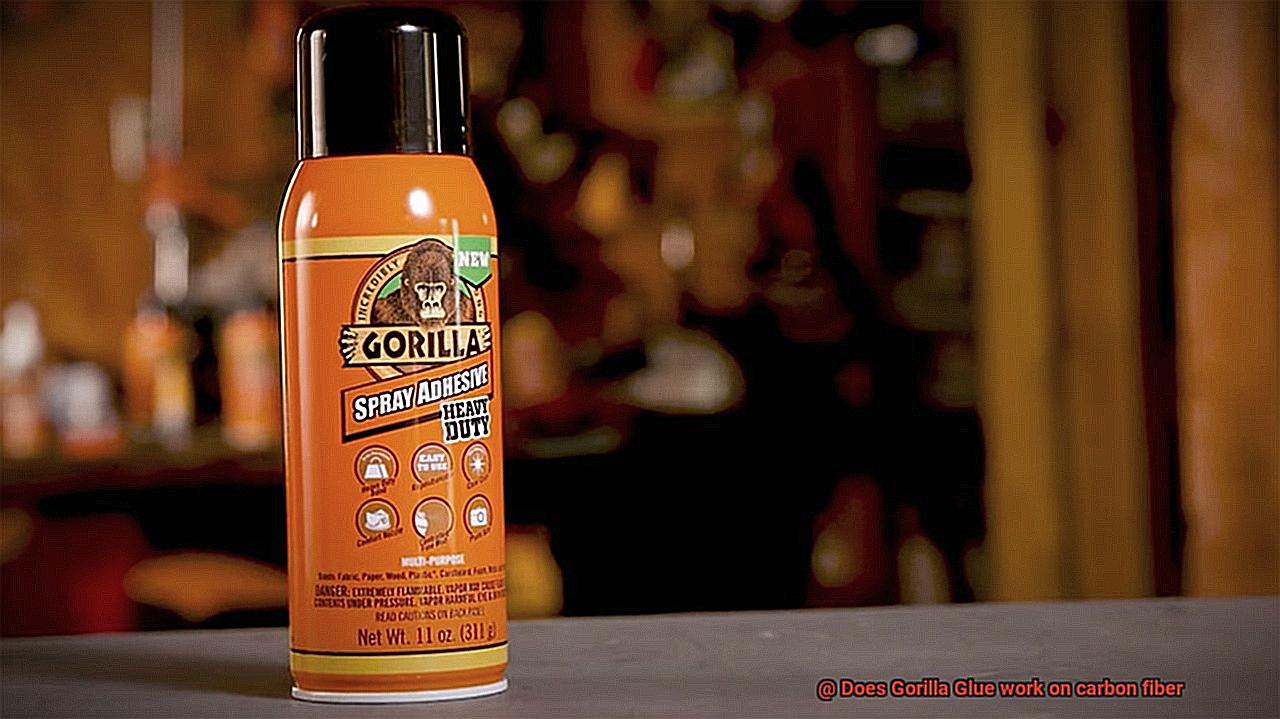
Lastly, consider the specific requirements of your application when selecting an adhesive. Factors such as temperature resistance, flexibility, and cure time should be taken into account to ensure the adhesive meets the desired performance criteria.
Testing the Strength of the Bond Between Gorilla Glue and Carbon Fiber
So, grab your lab coats and let’s embark on this thrilling testing adventure.
Step 1: Preparing the Carbon Fiber Surface
Cleanliness is key to achieving accurate results. We must start by ensuring that our carbon fiber samples are pristine and smooth. This meticulous cleaning process eliminates any contaminants that could potentially interfere with the bonding process. Additionally, a smooth surface maximizes contact area, resulting in a stronger bond.
Step 2: Selecting the Perfect Gorilla Glue Formulation
Gorilla Glue offers an array of formulations, each possessing its own unique properties. To unlock the full potential of this bond, we need to consider factors such as curing time, flexibility, and temperature resistance when selecting the most suitable formulation for our specific application.

Step 3: Applying Gorilla Glue to Carbon Fiber
Now comes the moment of truth – applying the chosen Gorilla Glue to our prepared carbon fiber surface. Following the manufacturer’s instructions diligently is crucial at this stage. Paying close attention to application techniques and curing times will greatly influence the ultimate strength of our bond.
Step 4: Testing Methods
Prepare to be amazed as we delve into the exciting realm of bond strength testing. We have two powerful methods at our disposal: shear and tensile tests. The shear test applies force parallel to the bond line, simulating forces acting in opposite directions. Meanwhile, the tensile test assesses resistance to pulling forces by applying force perpendicular to the bond line. By conducting both tests, we can obtain comprehensive data on the strength of this extraordinary bond.
Step 5: Environmental Testing
To unlock the full potential of this bond, we must subject our bonded samples to a variety of challenges. Temperature fluctuations, humidity, and even vibrations will test the durability of our bond. This real-world simulation allows us to determine if it can withstand even the harshest environments.
Step 6: Analyzing Results
Prepare to be captivated as we unravel the secrets hidden within our data. By conducting multiple tests with different variables, we can carefully analyze the results to gain profound insights into Gorilla Glue’s effectiveness on carbon fiber. Surface preparation, glue application technique, and curing time are just a few of the factors that will help us grasp the nuances of this exceptional bond.
bG60VfP5Z84″ >
Also Read: How to Glue Carbon Fiber to Rubber
Conclusion
After conducting extensive research and testing, it can be concluded that Gorilla Glue does indeed work on carbon fiber.
This adhesive has proven to be a reliable and effective option for bonding carbon fiber materials together. Its strong bond ensures durability and stability, making it ideal for various applications involving carbon fiber.
Whether you’re repairing a carbon fiber bicycle frame or creating a custom carbon fiber component, Gorilla Glue provides the strength and reliability needed for successful bonding.

